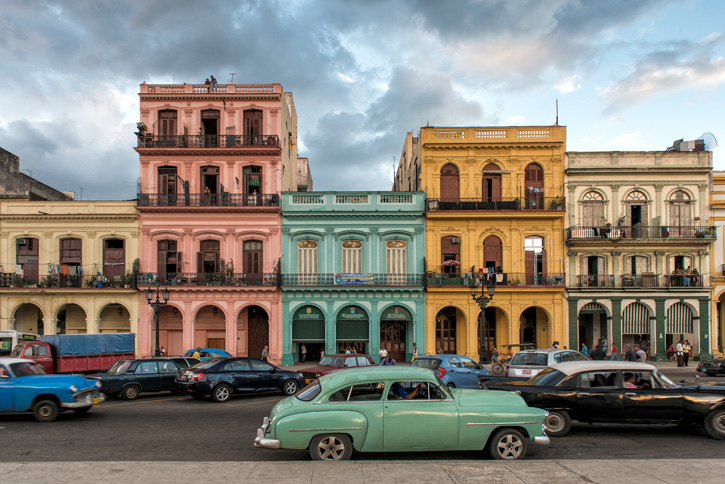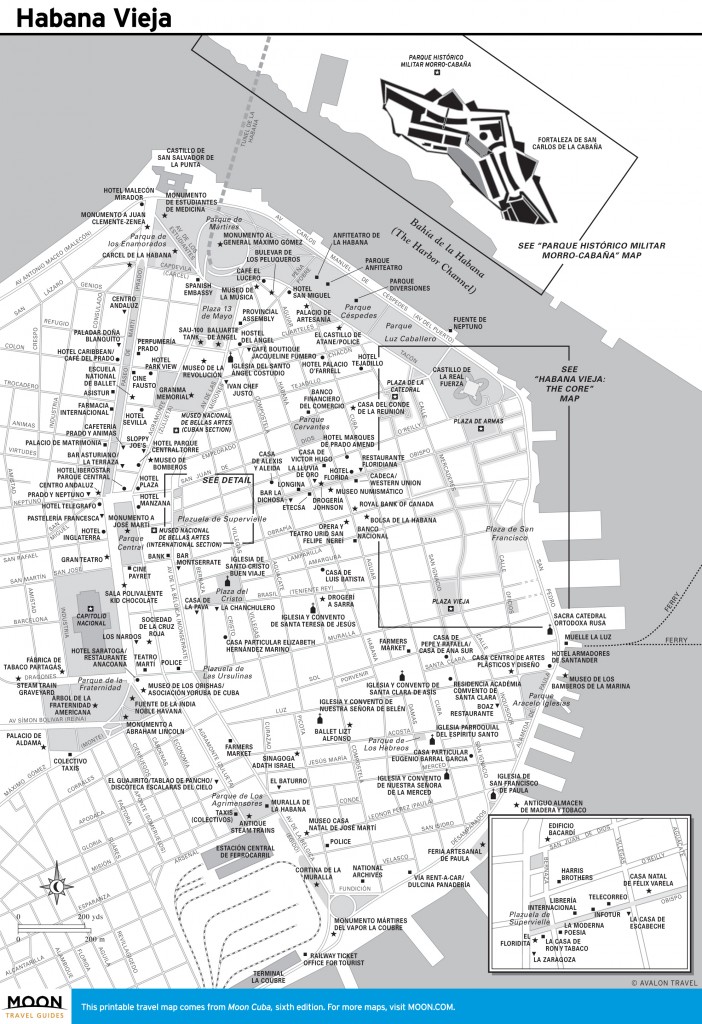Paseo de Martí, colloquially known as the Prado, is a kilometer-long tree-lined boulevard in Havana’s Habana Vieja neighborhood that slopes southward, uphill, from the harbor mouth to Parque Central. The beautiful boulevard was initiated by the Marqués de la Torre in 1772 and completed in 1852, when it had the name Alameda de Isabella II. It lay extramura (outside the old walled city) and was Havana’s most notable thoroughfare. Mansions of aristocratic families rose on each side and it was a sign of distinction to live here. The paseo—the daily carriage ride—along the boulevard was an important social ritual, with bands positioned at regular intervals to play to the parade of volantas (carriages).
At night it is lit by brass gas lamps with globes atop wrought-iron lampposts in the shape of griffins.French landscape artist Jean-Claude Nicolas Forestier remodeled the Prado to its present form in 1929. It’s guarded by eight bronze lions, with an elevated central walkway bordered by an ornate wall with alcoves containing marble benches carved with scroll motifs. At night it is lit by brass gas lamps with globes atop wrought-iron lampposts in the shape of griffins. Schoolchildren sit beneath shade trees, listening attentively to lessons presented alfresco. An art fair is held on Sundays.
One of Havana’s public taxis stopping in front of a row of colorful buildings on the Paseo de Martí. Photo © Josef Willems, licensed Creative Commons Attribution No-Derivatives.
Heading downhill from Neptuno, the first building of interest, on the east side at the corner of Virtudes, is the former American Club—U.S. expat headquarters before the Revolution. The Palacio de Matrimonio (Prado #306, esq. Ánimas, tel. 07/866-0661, Tues.-Fri. 8am-6pm), on the west side at the corner of Ánimas, is where many of Havana’s wedding ceremonies are performed. The palace, built in 1914, boasts a magnificent neo-baroque facade and an even more spectacularly ornate interior.
The Moorish-inspired Hotel Sevilla (Trocadero #55) is like entering a Moroccan medina. It was inspired by the Patio of the Lions at the Alhambra in Granada, Spain. The hotel opened in 1908. The gallery walls are festooned with black-and-white photos of famous figures who have stayed here, from singer Josephine Baker and boxer Joe Louis to Al Capone, who took the entire sixth floor (Capone occupied room 615).
At Trocadero, budding dancers train for potential ballet careers in the Escuela Nacional de Ballet (National School of Ballet, Prado #207, e/ Colón y Trocadero, tel. 07/862-7053 for permission to visit). On the west side, the Casa de los Científicos (Prado #212, esq. Trocadero, tel. 07/862-1607), the former home of President José Miguel Gómez, first president of the republic, is now a hotel; pop in to admire the fabulous stained-glass work and chapel.
At Prado and Colón, note the art deco Cine Fausto, an ornamental band on its upper facade; two blocks north, examine the mosaic mural of a Nubian beauty on the upper wall of the Centro Cultural de Árabe (between Refugio and Trocadero).
The bronze statue of Juan Clemente-Zenea (1832-1871), at the base of the Prado, honors a nationalist poet shot for treason in 1871.

Habana Vieja
Excerpted from the First Edition of Moon Havana.